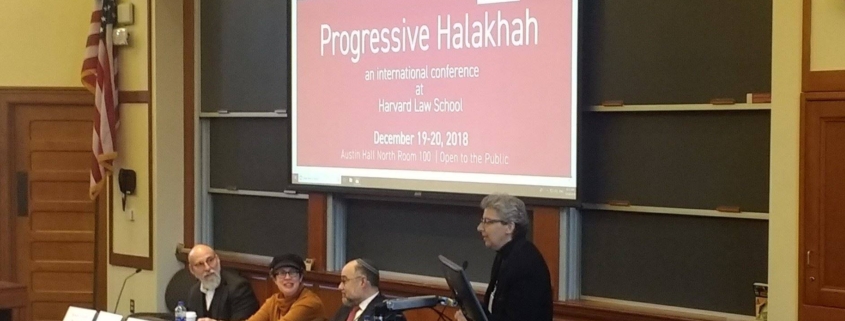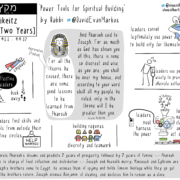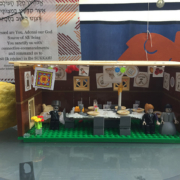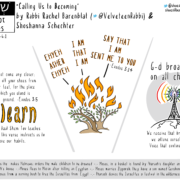#Trending in 2019: the Year Ahead for Building the Jewish Future
Happy 2019, fellow builders of the Jewish future! If you’re reading this blog, you’re part of a bold experiment in which everyone can be a builder. The question is how we’ll build together – what we’ll build, what tools we’ll need, what works and how we’ll know what works.
All effective builders survey the landscape – the light, the view, the bedrock, what grows, what’s needed. They build to the land, and the land changes.
As we survey the landscape of Jewish life, we can see what is and what’s next. We see trends that are exhilarating and inspiring, and proof that amazing ideas need solid ground. The best master builders know that the Jewish future needs a wise balance of inspiration and perspiration – lofty ideas and strong foundations.
In that spirit, here’s some of what we see #Trending in 2019 for building the Jewish future.
 Opening Borders and New Conveners. Spiritual borders will continue to open wider and at a faster pace. The Pew Study “nones” who question religions in their current forms, who embrace spirituality precisely in questions that yearn for meaning, will inject meaning into a Jewish life eager to include them on their own terms. Halakhah (Jewish law and practice, literally “the way”) – once imagined to be a fixed province of right-leaning orthopraxy – increasingly will be a forum for spiritual and social progressivity. As nature abhors vacuums, thought-leaders of border-opening initiatives will draw from the breadth of Jewish life and, in turn, hasten these trends in an accelerating feedback loop of inclusion, creativity and innovation.
Opening Borders and New Conveners. Spiritual borders will continue to open wider and at a faster pace. The Pew Study “nones” who question religions in their current forms, who embrace spirituality precisely in questions that yearn for meaning, will inject meaning into a Jewish life eager to include them on their own terms. Halakhah (Jewish law and practice, literally “the way”) – once imagined to be a fixed province of right-leaning orthopraxy – increasingly will be a forum for spiritual and social progressivity. As nature abhors vacuums, thought-leaders of border-opening initiatives will draw from the breadth of Jewish life and, in turn, hasten these trends in an accelerating feedback loop of inclusion, creativity and innovation.
 Social Justice on the Spiritual Calendar. Tikkun olam (social justice, literally “repairing the world”) will more deeply root as a spiritual practice with beacons on the Jewish calendar. Inspired by groups like T’ruah: The Rabbinic Call for Human Rights, Passover (always about resisting tyranny) will drive both individual and collective social action across the political spectrum. So will Havdalah (ritual bridge between Shabbat and the week ahead), inspired by the #BeALight Coalition. In turn, emphasized times for social action will infuse spiritual life with meaning and help attract Jews of all generations to the spiritual calendar and spiritual community.
Social Justice on the Spiritual Calendar. Tikkun olam (social justice, literally “repairing the world”) will more deeply root as a spiritual practice with beacons on the Jewish calendar. Inspired by groups like T’ruah: The Rabbinic Call for Human Rights, Passover (always about resisting tyranny) will drive both individual and collective social action across the political spectrum. So will Havdalah (ritual bridge between Shabbat and the week ahead), inspired by the #BeALight Coalition. In turn, emphasized times for social action will infuse spiritual life with meaning and help attract Jews of all generations to the spiritual calendar and spiritual community.
Rebooting Ethics From the Outside In. Jewish communities are learning (sometimes the hard way) that transparency, accountability and right use of power are never self-executing. Public trust – the lifeblood of Jewish communal life – requires both high ethics standards (such as Slingshot’s “workplace commitments” for nonprofit Boards) and vibrant systems to enforce ethics standards. As #GamAni shows, closed ethics systems inside individual denominations, seminaries, clergy associations and Jewish nonprofits inherently are prone to self-protection and groupthink that sap public trust. While journalists continue holding power accountable, 2019 will be the year to pioneer a new, clean ethics regime for Jewish life – one that elevates reporting, investigation, fact-finding, training and victim support above any single circle of influence or sponsoring context. Lifting ethics above denominational context, and supporting nonprofits that don’t have their own independent ethics system, can reboot Jewish ethics from the outside in.
 Adapting to the New Philanthropy. 2019 will be the year that Jewish life adapts to the recent tax law’s impacts on charitable giving – and enterprises that don’t adapt will wither. “Deduction bunching” is sparking a revolution in philanthropy, with donor-advised funds (DAFs) housed in public charities far outpacing medium-donor private grants. As this trend accelerates, the grant-making influence of large-scale philanthropies that host DAFs will continue to grow. Successful Jewish organizations will need to tailor their asks, budgets and relationships accordingly – or get left behind.
Adapting to the New Philanthropy. 2019 will be the year that Jewish life adapts to the recent tax law’s impacts on charitable giving – and enterprises that don’t adapt will wither. “Deduction bunching” is sparking a revolution in philanthropy, with donor-advised funds (DAFs) housed in public charities far outpacing medium-donor private grants. As this trend accelerates, the grant-making influence of large-scale philanthropies that host DAFs will continue to grow. Successful Jewish organizations will need to tailor their asks, budgets and relationships accordingly – or get left behind.
Jewish Gluten is Back! No offense to the gluten-free set, but Jewish gluten is back! From trendy bagel shops to pierogi stands, Jews are rediscovering Ashkenazic ancestral cuisine in all its high-gluten glory. Lines are out the door for fresh-baked bagels at DC’s “Call Your Mother” on weekends. While New York’s famous H & H Bagel shops have closed, the company now ships anywhere. Brooklyn hipsters are flocking to DeKalb Market for classic pierogies made by the Pierogi Boys. South Philly is getting challah at Essen Bakery. (Grab a chocolate babka for dessert while you’re there, unless you’re in Manhattan… where Breads Bakery arguably has the best chocolate babka this side of Poland.)
 People of the Image (not just “People of the Book”). The internet long ago moved beyond text: longform blogs are yielding to visual realms on Instagram and Facebook, where images hold sway. Jews are still a “People of the Book,” but 2019 will be a watershed year experiencing and sharing Jewish ideas with images rather than just words. Visual approaches will engage broader audiences and new teaching tools, such as Jewish sketchnoting. As Jews increasingly become a “People of the Image,” visual tools will offer NextGen engagement and technologies new roles in learning and teaching Torah.
People of the Image (not just “People of the Book”). The internet long ago moved beyond text: longform blogs are yielding to visual realms on Instagram and Facebook, where images hold sway. Jews are still a “People of the Book,” but 2019 will be a watershed year experiencing and sharing Jewish ideas with images rather than just words. Visual approaches will engage broader audiences and new teaching tools, such as Jewish sketchnoting. As Jews increasingly become a “People of the Image,” visual tools will offer NextGen engagement and technologies new roles in learning and teaching Torah.
Effective Jewish “R&D.” Innovation means more than “throwing stuff at the wall to see what sticks.” Innovation is meaningful not because it’s new or avant garde but because it achieves a tangible, replicable impact on Jewish life. In 2019, we’ll see the most effective Jewish innovators getting disciplined about “research and development” (R&D) – exploring what works and why, what it means for innovation to “work” in Jewish community, and how to replicate results. Tools of empirical R&D will make their way to both mainline and emergent settings, fueled by funders investing in vital pathways of impactful innovation. In turn, as more would-be innovators create their own projects and communities, the proliferation of these new engagements will reach a tipping point. Their need for knowhow and quality control will attract them into networks to share ideas and build efficiencies. Conveners for these networks, like Kenissa, will become vital to moving these “communities of meaning” forward.









